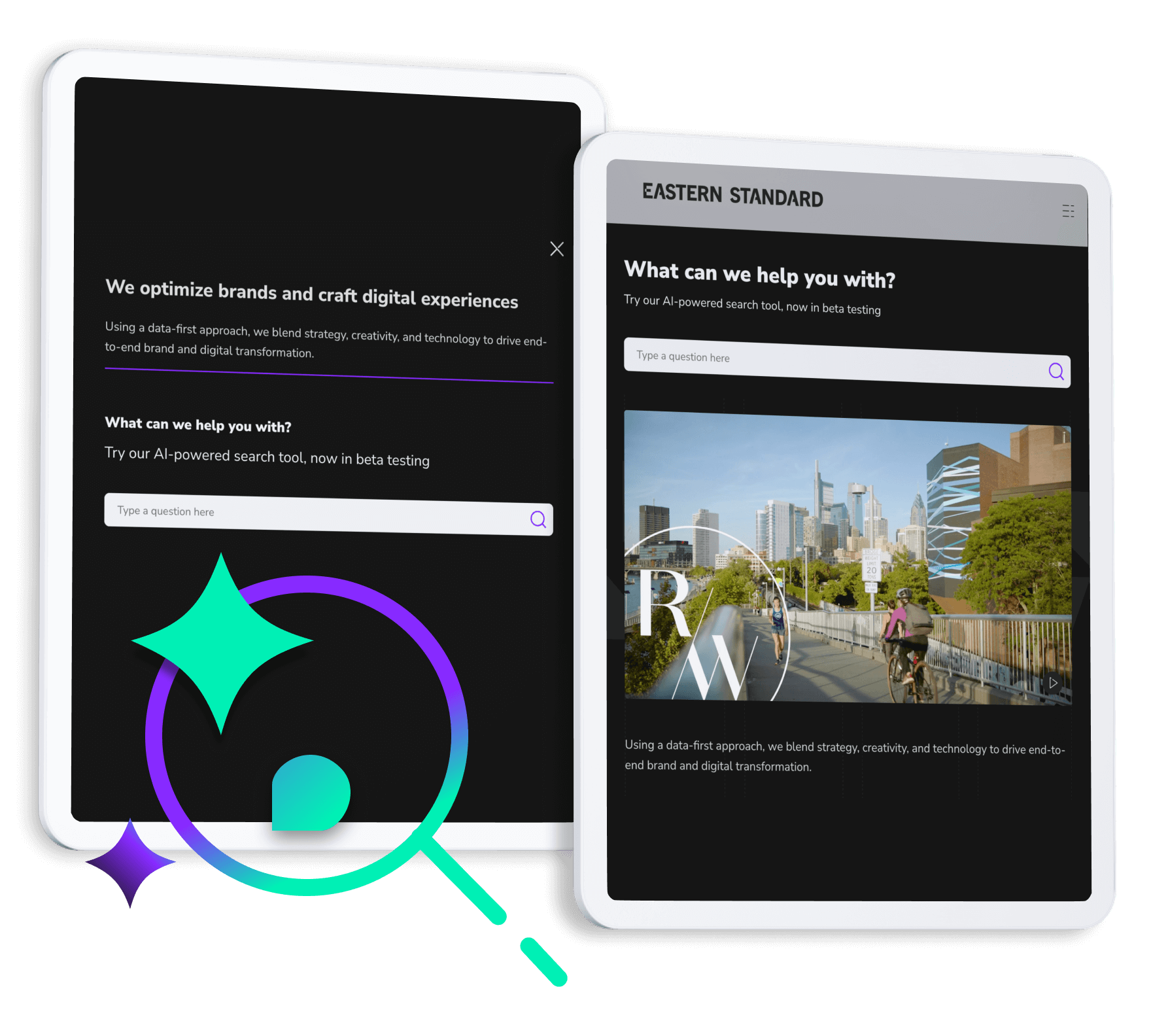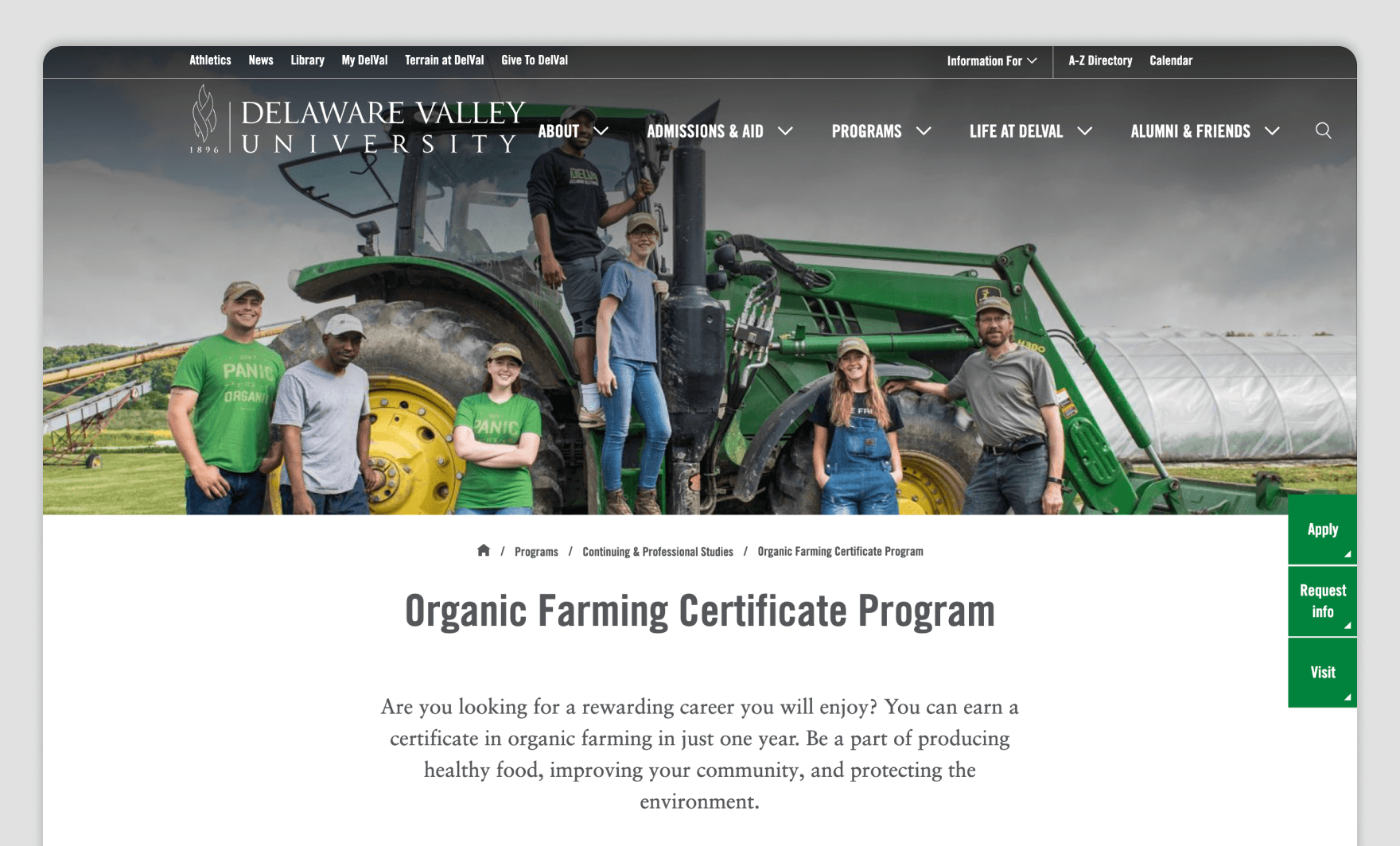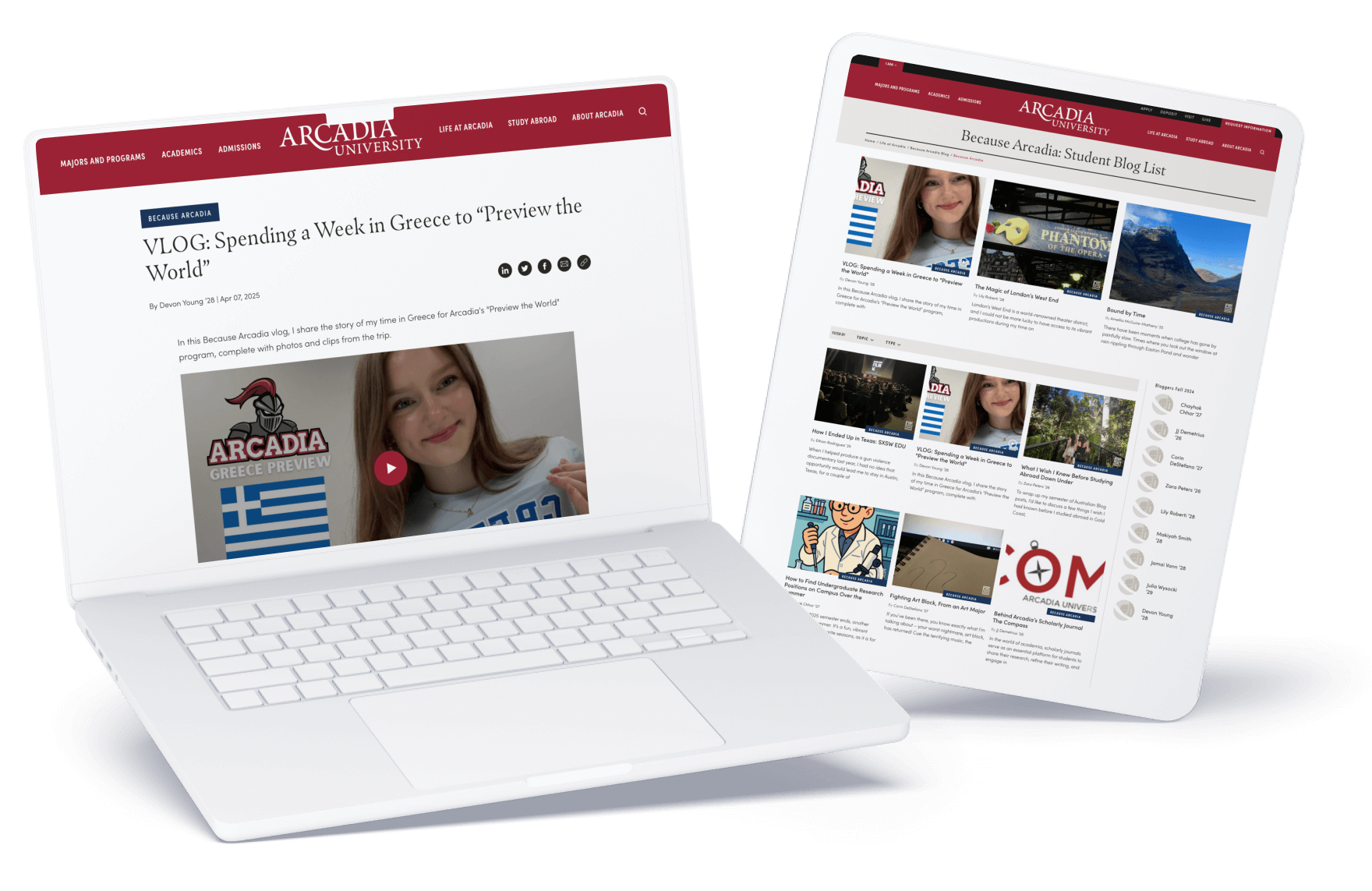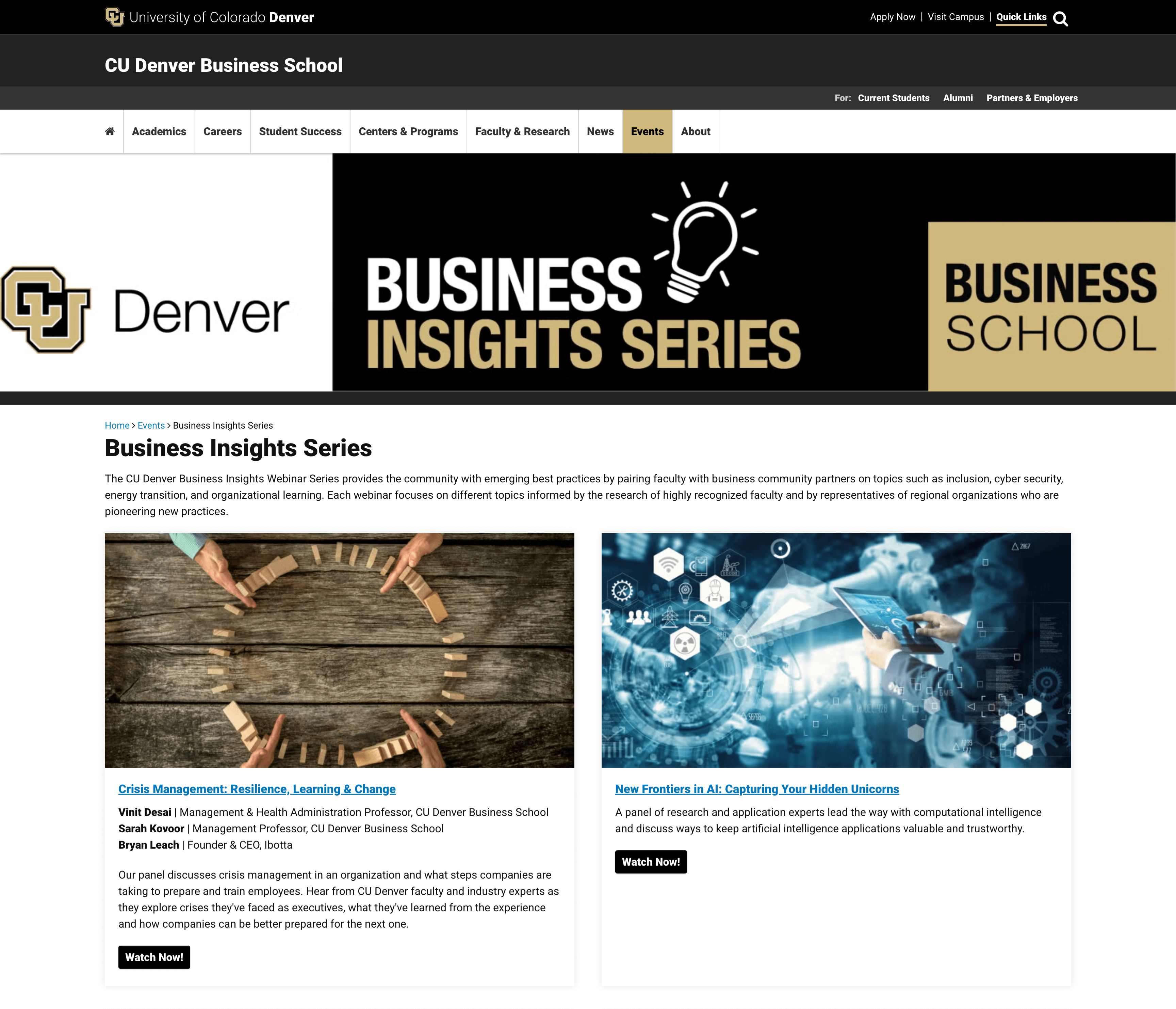The Top Higher Ed Digital Content Marketing Trends of 2025
Heading into the final stretch of 2025, experts agree that this year marked a turning point in higher ed digital content marketing. In a nutshell, the focus has shifted from generic, top-down promotions to personalized, immersive, and values-driven outreach efforts grounded in technology and trust.
Here’s a closer look at what’s hot now in digital content marketing across college and university campuses — and how it’s shifted compared to previous years.
Doubling Down on AI-Driven Personalization & Content Automation
As in almost every other industry, AI continues to change the higher ed landscape at breakneck speed.
And when it comes to college and university websites, AI is making big waves in generating predictive analytics — in other words, analyzing past and present user data to predict future outcomes. This gives marcomm teams key insights into individual demographics and browsing behavior so they can deliver highly effective, ultra-tailored experiences spanning everything from personalized emails to dynamic web content and more.
AI-powered tools are also being used to automate things like on-site search, chatbot discussions, prospective student inquiry responses, enrollment reminders, and campaign optimization, making admissions marketing initiatives more efficient and responsive.

However, the most successful college and university brands are integrating AI as a strategy to supplement rather than replace the human touch throughout their messaging.
Leveraging Evolutions in Video & Live Streaming
Live streaming for things like virtual campus tours, Q&A sessions, and other on-site events is now more than mainstream; it’s a must for meeting the demand for real-time, immersive interactions.
Cutting-edge virtual reality and audiovisual technologies like ultra-low-latency video streaming from vendors like Soliton Systems, Evercast, and Cloudflare are making the job of admissions marketers easier, as they now enable high-quality, nearly instantaneous video feeds with sub-second lag times.
Because these experiences can authentically replicate the look and feel of in-person interactions, they’re becoming crucial tools for driving engagement and influencing the enrollment decisions of even the most widely dispersed geographical audiences.
Getting More Mileage Out of Micro-Content, Social Media & Influencer Marketing
Savvy higher ed digital marketing teams are creating authentic, emotion-driven clips that showcase campus life, programs, and student experiences exclusively for short-form TikToks, Instagram Reels, and YouTube Shorts, platforms that continue to be a cornerstone for engaging college-age Gen Z prospects (and Gen Alpha right behind them!).
They’re also enlisting the help of student ambassadors, alumni, and micro-influencers in creating and sharing relatable, authentic campus content that resonates instantly and spreads easily across platforms thanks to the power of social proof and peer relatability.
Focusing on Fun With Interactive, Gamified & Immersive Content
In contrast to the traditional, static marketing materials of years past, schools like Western Michigan University, The University of Arizona, and Ball State University are taking a strong run at dynamic prospect experiences through interactive viewbooks, quizzes, polls, and gaming-style application portals.
While these tactics may seem like unnecessary “fluff” at first, they’re proving to be powerfully adept at capturing attention and driving engagement.
In 2024, the AI-powered student engagement platform Element451 reported that institutions using gamified features like milestones, badges, treasure hunts, and other interactive content in their application process saw a 27% higher completion rate over those that did not.
(Element451 Insights, Q1 2024)
Standing Out With Voice Search Optimization
With the rising use of voice assistants on smartphones and smart speakers like Siri, Amazon Alexa, and Google Assistant, colleges and universities are rethinking and restructuring their content to answer conversational queries naturally and boost their discoverability in voice-driven user searches.
Likewise, with the proliferation of generative AI-driven search “overviews”, institutions are adapting their SEO and GEO strategies to optimize for the most common transactional and commercial keywords (while still encouraging users to click through to their actual sites).
Amplifying Outcome-Based Messaging for Alternative Learning Pathways

Traditional higher ed programs continue to see a general enrollment decline, while alternative learning programs like certificates, apprenticeships, and micro-credentials are booming. Higher ed institutions are marketing these as cost-effective, career-focused alternatives to traditional degrees while emphasizing outcomes like job placement, skill acquisition, and flexibility — all of which resonate strongly with today’s learners.
Storytelling Driven by Values

Prospective college-age students — a demographic that grew up with instant access to information and a highly evolved knack for spotting inauthenticity — are demanding transparent interactions that align with their ethical beliefs. For this reason, we’re seeing more and more higher ed marketing campaigns leaning hard into the themes of sustainability, social responsibility, diversity, and inclusion.
Caveat: Universities are finding they have to employ this strategy carefully, as initiatives that come across as contrived or performative almost always backfire with this market.
Strengthening Bonds Through Thought Leadership & Podcasting

To build credibility, engagement, and long-term relationships with current students and alumni — and stand out among their peer institutions — more universities are creating faculty-driven content like thought leadership posts and podcasts covering program insights, admissions advice, or scholarly discussions that are highly tailored to the wants and needs of their intended markets.
Case in point: The University of Colorado Denver offers the popular webinar Business Insights Series featuring interviews between their business school faculty and community partners to shed light on industry hot topics.

How Eastern Standard Can Help
Need help leveraging recent advancements in digital content marketing for your own higher ed website? Let’s work together.
Q&A
How is AI changing higher education digital marketing in 2025?
AI is transforming higher ed marketing through predictive analytics that analyze user data to deliver personalized experiences like tailored emails and dynamic web content. AI-powered tools also automate on-site search, chatbot interactions, inquiry responses, and campaign optimization. However, successful institutions use AI to supplement rather than replace human connection in their messaging.
What role does video and live streaming play in college enrollment marketing?
Live streaming has become essential for virtual campus tours, Q&A sessions, and campus events. Ultra-low-latency video technologies now enable high-quality, nearly instantaneous feeds that authentically replicate in-person interactions. These immersive experiences are proving crucial for engaging geographically dispersed prospective students and influencing enrollment decisions.
How are universities adapting content for Gen Z audiences?
Higher ed marketers are creating authentic, emotion-driven short-form content for TikTok, Instagram Reels, and YouTube Shorts. They enlist student ambassadors and micro-influencers to share relatable campus content that resonates through social proof. Universities are also adding interactive elements like gamified application portals, quizzes, and dynamic viewbooks to capture attention.
Why are values-driven messaging and alternative credentials important trends?
Prospective students demand authentic interactions aligned with their ethical beliefs, making sustainability, diversity, and social responsibility key themes. Meanwhile, alternative learning programs like certificates and micro-credentials are booming as cost-effective, career-focused options. Marketing these pathways requires emphasizing outcomes like job placement and flexibility.
Eastern Standard helps colleges and universities create compelling digital content strategies. Our content strategy and digital marketing teams specialize in engaging prospective students for higher education institutions. Contact us to elevate your enrollment marketing.



